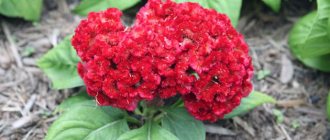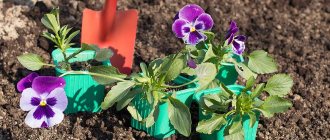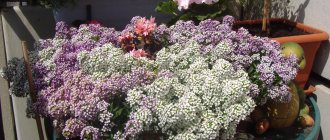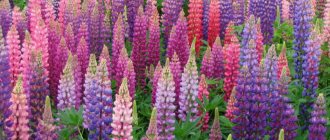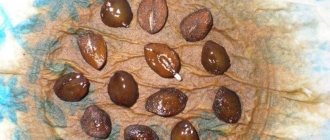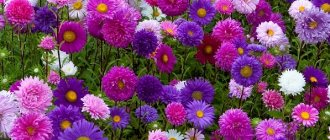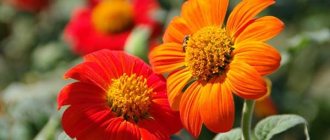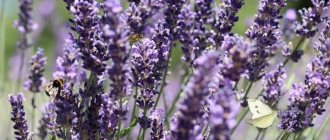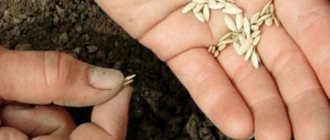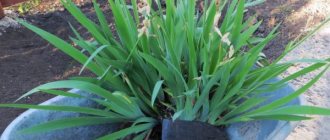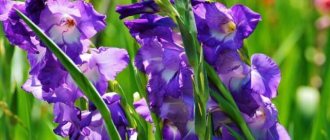Description of zinnia
Zinnia is an annual and perennial herb or subshrub of the Asteraceae family. Gardeners most often grow two types - narrow-leaved and graceful. In total, there are about 20 of them in nature. Annual zinnias are actively cultivated. Plant varieties have different heights, some dwarf varieties do not exceed 30 cm. A bush is considered medium-sized if its stem reaches 70 cm, and tall if it is more than one meter.
The inflorescences-baskets are large, of various shapes, brightly colored. They are divided into the following types:
- scabiosa;
- cactus-like;
- chrysanthemum-shaped;
- Californian;
- dahlias;
- pompoms.
The last three are especially popular among gardeners.
Advice! When choosing a variety, it is necessary to take into account that terry specimens are more capricious in cultivation than semi-double or ordinary zinnias.
Pompon zinnia is also called lilliputian; its stems do not grow higher than 0.5 m. The bush is compact and branched, looks very decorative. The flowers are double, about 5 cm in diameter, densely covering the shoots. Often several bushes of different varieties are grown together so that the flower bed does not lose its decorative effect until the fall. The flower dies at temperatures below - 1 ° C, so when growing it you need to monitor the weather. The color of the petals does not fade in the sun. The most famous varieties are Tom-Thumb and Rotkopchen.
Dahlia zinnia is distinguished by large double flowers and a high, about 1 m, stem. The color of the buds can be different - white, yellow, crimson, pink, purple. The size of the flowers reaches 15 cm. A popular variety of dahlia-shaped zinnias is Polar Bear. It has white flowers and a height of 70 cm.
Also often grown on plots are the Dream variety with pink flowers, and the Violet variety with purple buds. Both plants are about 1 m high and have voluminous double flowers.
California zinnia also has large flowers and a tall stem. The plant is strong and can exist calmly without support. The diameter of the inflorescences is 10-15 cm, the color is bright. On sale you can find a California mixture, when grown, you get a ready-made colorful flower bed.
Annual zinnia flowers are propagated by growing them from seeds. The varietal characteristics are preserved.
Procurement and storage of seeds
You can grow major seeds yourself. After about 2 months from the time the zinnia blooms, seeds begin to appear. They are located in the original box. In order to obtain high-quality ripened seeds, it is necessary to wait until they are fully ripe. When this happens, you can tell by the color of the box. It should turn brown. The most important thing is not to miss the moment of collection. Otherwise, the seeds will sow on their own, and next year the small zinnias will grow in a chaotic manner.
The seed pods must be cut with sharp scissors. Next, they need to be dried well. Then carefully remove the seeds and place them in a paper bag. They are stored in a dark, dry place. If stored correctly, they will not lose their viability for 3-4 years.
When preparing seeds, it is necessary to take into account that the first flowering plants will have better seed quality than the subsequent ones. Therefore, after the end of flowering, it is necessary to remove all shoots from the first inflorescences and leave the flower for the capsule to appear.
How to collect zinnia seeds
To collect zinnia seeds, choose the most beautiful flower and, when it withers and ripens, cut it. The seeds are completely ready no earlier than 60 days, so the material is chosen from the first ones grown in the flowerbed. At the same time, they are also guided by the fact that early flowers are the brightest and largest. That is, some selection work is carried out - the best specimens are selected for reproduction.
If the seed head is not dry enough, you can let it sit longer. It should be brown in color. To extract the seeds, carefully remove the petals and remove the seed from the center of the basket. Then follows sorting, additional drying and packaging in paper bags. You can still sort, but this is relevant if you decide to propagate and use only one type of zinnia for growing.
You can see what zinnia seeds look like in the photo:
Store seeds in a cool, dark place. The main thing is to ensure that mold does not form and to avoid fungal infections.
Conditions for germination of zinnia seeds
As a rule, zinnias sprout very quickly. The wait lasts only a few days if you use freshly collected (last season) seeds and up to 10 days for seeds that have been stored for 1-2 seasons.
Zinnias like consistently warm temperatures. Optimal parameters for germination are from 22 to 26 degrees. Bright lighting is necessary only when shoots appear, but since this plant germinates very quickly, in order not to miss the moment of sprouts appearing, it is better to immediately place the containers in a well-lit place.
Planting zinnia for seedlings
The plant is afraid of cold weather, so it is important to plant it when warm weather sets in. In general, caring for a flower is not difficult. Growing zinnia from seeds at home is accessible to anyone.
Sowing dates for zinnia
To understand when to plant low-growing zinnia when growing from seeds, you need to take into account that it will germinate very quickly and the seedlings will begin to actively develop. The optimal time is mid-April. The seedling period is 5-6 weeks.
Selection of capacity
Typically, seedling boxes are chosen for growing seeds. Their height should be about 10 cm. The boxes are filled ⅔ with soil, this is quite enough for successful seed germination.
Advice! It is convenient to plant zinnia immediately in separate pots, this way you can avoid picking.
Soil preparation
Growing zinnia seeds can be done at home, as well as in a greenhouse. For all plants of the Asteraceae family, the substrate is prepared in the same way. It is necessary to take peat, sand, turf soil and humus in equal proportions. Special stores have ready-made soil mixtures.
When independently preparing a substrate for growing seedlings, all its components must be thoroughly steamed or treated with a solution of potassium permanganate. In this way, diseases and pests that may be present are destroyed. It will be much easier to grow zinnia from seeds in prepared soil.
Seed selection and preparation
One basket contains several types of seeds:
- flat shield-shaped;
- sharp spear-shaped;
- sharp with an awl-shaped tail.
They are sorted separately, because different seeds of one flower will produce different plants. From corymboses, simple zinnias arise, without signs of doubleness, even if the parent culture had these characteristics. Seeds in the form of copies when grown form regular or semi-double specimens. But the awl-shaped form will lead to the formation of large double flowers. Such seeds can be found in the outer row of a dried basket. It is better for beginning flower growers to master ordinary non-double varieties of zinnias for growing, as they are easier to care for.
Large seeds are easy to sort and are not subject to additional processing. This fact also contributes to the wide distribution of the flower among gardeners. However, if you soak the seeds in Epin, they will sprout faster and more quickly. For those who like to do everything as naturally as possible, this stage can be skipped; the plant’s germination rate is already good.
Seed sowing scheme
If further picking is expected during cultivation, then the seeds can be arranged quite densely. But sowing at a distance of 4 cm from each other will avoid this procedure. When the seedlings gain strength and tighten up, they are sprinkled with nutritious soil. During the growing process, the stems form adventitious roots, and the plant will continue to develop normally.
Attention! Immediately after sowing, the containers are covered with film and the boxes are put away in a dark and warm place. Shoots will begin to appear on the 3-4th day. During this period, the cover is removed from the boxes.
Diseases and pests of majors
Among diseases, zinnia most often suffers from fungal infections or rot. If the shoots are severely affected, they are simply removed. This problem is much easier to prevent than to look for solutions. You just need to follow the watering regime and not moisten the soil too much. And also leave enough space between the plants, do not thicken them too much, so that they are well ventilated. Also, zinnia should be planted in a sunny place that the fungus does not tolerate.
May beetles, snails and slugs like to feast on major flowers; aphids also settle on flowers. When insect pests appear, insecticide treatment is required. But you will have to fight snails and slugs manually and simply collect them. Mulching the soil or placing pieces of slate between the flowers also helps protect the beds from these uninvited guests.
Zinnia or major is a beautiful crop with colorful flowers. It will please its owners for a long time. Caring for the flower is not difficult, especially since majors tolerate drought well. Zinnia is easy to grow either directly from seeds or from seedlings.
Caring for zinnia seedlings
Caring for zinnia seedlings when grown from seeds is not difficult. It includes standard procedures. And if at the planting stage you do it in such a way as to avoid picking, then care becomes even easier. A measure such as strict adherence to certain rules will allow you to grow good zinnia seedlings at home.
Picking up seedlings
If the seeds were initially sown thickly, then over time they will not have enough nutrients. When growing, it will be necessary to provide them with a large area. Young plants are carefully removed from the container in which they were located and placed in larger containers or in separate pots.
After transplanting, it is necessary to protect the crops from direct sunlight and provide them with watering. During the growing period, seedlings must be protected from drafts.
Hardening of seedlings
Before placing zinnia in a permanent place of cultivation in the flower garden, it must be hardened off. You should spend at least a week on this procedure, 14-16 days would be optimal. Hardening begins with opening the window for a short period. The flower will thus feel the fresh air.
Then, in good weather, the seedlings are taken to the balcony or outside. It is advisable to carry out hardening immediately at the dacha, this makes it easier to control the ambient temperature and the time spent outdoors. In addition, the zinnia will be in conditions as close as possible to the conditions of its further existence.
What kind of zinnia flowers are they?
The content of the article
- What kind of zinnia flowers are they?
- Types and varieties
- When and how to plant seedlings
- Seedling care
- How to sow in open ground
- How to care
- Diseases and pests
- When and how to collect zinnia seeds
Zinnia belongs to the Asteraceae family. This flower can be a perennial herbaceous plant or shrub, but is more often grown as an annual. The species is native to Southern Mexico and has been known in this country since 1500. Introduced to Europe in the 18th century.
For some time, zinnia was even a symbol of one of the US states (Indiana). The culture is also popular in modern floriculture, due to its ease of care and unpretentiousness.
Characteristics:
- height depends on the type and variety, therefore varies from 20 cm to 1 meter;
- flowering period - from the second half of July until the first frost;
- resistant to drought and hot climates;
- suitable for garden decoration and stands well when cut;
- a good companion to vegetables. It stretches upward and the stems do not create shadow;
- flowering cycle – annual, becomes perennial only in hot countries;
- leaves are entire, ovoid in shape. The stem is powerful. The leaves and stem are covered with fluff;
- flower diameter varies from 3 to 15 cm;
- the color of the inflorescence can be any, with the exception of blue shades;
- Zinnia does not tolerate cold. Already at a temperature of -1 degree it dies;
- seeds are formed in the fruit-achene, decorated with a tuft;
- The preferred growing option is seedlings.
Planting seedlings in open ground
The best time to move zinnia grown from seeds into open ground is the end of May and the beginning of June. It is important that there are no frosts at this point, otherwise the plant will simply die.
The planting site is selected based on the varietal characteristics of the plant:
- tall Californian zinnias, as a rule, get a place in the background; they often hide unsightly parts of the garden;
- varieties with medium height can be placed anywhere, most often they are in the center of the flower bed, but can also be grown in flowerpots;
- low-growing specimens are placed in the foreground of flower arrangements, used in borders, and they are also good for balconies.
Since the flower petals do not fade, the plant is safely placed in sunny places. It does not tolerate growing in shade. In this case, open sunlight would be preferable. The bushes branch heavily, so the optimal distance for planting them will be 30-35 cm. This way, each plant will have enough nutrients, and caring for it will be easier. There will be enough space for weeding and loosening.
When growing seedlings in peat pots, replanting is greatly facilitated - the seedling is placed in the ground along with them. When removing roots from ordinary containers, you must be careful not to damage them. An uninjured plant will take root better and grow stronger faster.
Further care of zinnia in open ground when grown from seeds is not difficult:
- Watering can be rare, but plentiful. It is necessary to ensure that the stream does not touch the peduncle, otherwise it may begin to rot. Faded and rain-damaged parts of the plant are promptly removed.
- If you want to make the bush lush and low, pinch it. Without this procedure, the stem will grow in height. Pinching is done when the plant has a sufficient number of leaves; the central stem is removed above the third or fourth pair of leaves.
- Loosening the soil should be done regularly, especially after watering or rain. The main thing is to prevent the formation of a crust, as it will impede oxygen access to the roots.
- Fertilizing is necessary only in case of deviations in growth or the presence of yellowing leaves. Complex fertilizers are used, which also prevent the occurrence of fungus. The solution is prepared in accordance with the instructions and applied under the zinnia bushes. You can use the drugs Gumax, Rose, Ideal.
How to care
Caring for zinnia is simple and uncomplicated. Its main stages: pinching, feeding, watering, protection from diseases and pests.
Topping
This procedure is necessary to form a lush, beautiful bush. Pinching is carried out no earlier than 2-3 weeks after planting in open ground. Everything above 3 or 4 leaf pairs is removed.
If pinching is not carried out, tall plants with long stems will grow. These look beautiful cut.
Watering
It is necessary to moisten the soil as the top layer dries. On hot days, this interval is a day or two. In moderately warm weather, reduce watering to 2 times a week. It is important to ensure that the drops do not fall on the leaves and stems, otherwise the plant will get sunburn.
Between waterings, loosening is necessary. Infrequent moistening leads to a decrease in the intensity of leaf color and rapid withering of flowers; frequent moistening leads to rotting of the roots and death.
Top dressing
In total, fertilizer is applied twice during growth. The first time - 3-4 weeks after planting, the second - another month. The exception is a very hot summer, then fertilizing is applied three times, with an interval of one month.
Suitable fertilizers:
- ready-made mineral complex for flower crops;
- solution of manure or chicken droppings.
Sowing seeds in a greenhouse
When climatic and greenhouse conditions allow, there is no point in growing seedlings at home. Zinnia seeds are sowed in a greenhouse. The main advantages of growing seedlings in a greenhouse are good lighting and acclimatization of plants. During the period of frost, the shoots are protected with white covering non-woven material. Ultraviolet radiation needed by plants passes through it.
Zinnia is planted in separate containers or boxes. It is not recommended to plant seeds in the ground. Firstly, there may be pests in the ground, and they will have to be treated. Secondly, the soil after tomatoes and eggplants is not suitable for zinnia; the plants have similar diseases. Thirdly, flower seedlings will not interfere with the spring preparation of the greenhouse for planting heat-loving crops.
Care after flowering
In order for the seed boxes to produce high-quality seeds, they must stand for another 2-3 months after flowering. After the plant has flowered, you need to cut out the seed boxes. You only need to leave those from which you want to collect seeds. In addition, you can trim off excess buds during flowering. This technique stimulates the plant to direct all its forces to the seeds.
Identifying a replacement box ready for assembly is easy. It turns light brown. After the box is cut, it must be dried. After the seeds are removed from the box, they should be sorted and the best ones selected. They are located closer to the core. Choose seeds with an awl-shaped or triangular shape. The collected seeds are placed for storage in paper envelopes.
To get a good harvest, you should not use seeds that are more than 4 years old. Therefore, it is better to sign the envelopes and indicate in which year the harvest was harvested. In addition, it is worth indicating the name, color and height.
Due to the fact that the seeds are stored for up to 4 years, there is no need to collect seeds every year. The supply of seeds can be replenished as needed. One flower lives for about a month. If you cut off faded buds in a timely manner, the bush will produce new ones almost continuously throughout the season.
Collection and storage of zinnia seeds
To be sure of the quality of planting material, it is better to collect your own, proven seeds for planting. So how can you collect them to enjoy the unique flowering again? It's easy, but there are some details to consider.
It is advisable to collect seed material from strong plants of regular shape, beautiful colors, with tall thick stems. Strings tied in advance to the selected plant will help you recognize the right flowers.
The zinnia seed becomes mature 2 months after flowering. Large buds should be selected for collection in mid or late August. In case of heavy rains, the heads must be dried, otherwise the seeds will lose their sowing qualities.
Varieties of zinnia seeds:
- Flat shields (in simple, non-terry species). They are brown and have a dent on top.
- Spear-shaped (in double and semi-double zinnias). They are darker, elongated in the shape of a spear. They are characterized by weaker germination.
- Elongated seeds with a tail (in double species). The shade is gray. They grow on the outer rows, therefore, they are easily separated.
It is convenient to sort seeds on a white paper sheet. If the process is carried out correctly, we obtain simple, semi-double, and double varieties chosen at our own request. Even if simple flowers grow, they will decorate the flowerbed no worse than double flowers, especially if they occupy an impressive space.
It is better to collect the seeds before frost, because the plant is not frost-resistant. It is recommended to do this in dry weather during the day, because in the morning the vegetation is covered with dew, and excess moisture can spoil the planting material.
If it has been raining for a week, it is better to wait a few days until the flowers dry out. In order for the material to be of high quality, it is advisable to plant specimens with white petals separately from crimson and scarlet petals, because they are capable of cross-pollination. The result will be a sample with white buds with a pink dot. And from such seeds, buds of a completely unexpected palette will then grow.
To collect seeds you will need:
- seed box;
- paper sheet;
- paper storage bag;
- felt-tip pen or pen for notes.
Procedure:
- Make sure that the selected flowers have dried well, their heads have darkened, and the middle has become like a stiff brush. This means that the right moment has come.
- Take out the centers.
- Shake them out onto a piece of paper. Choose more elongated samples. Remember - large seeds germinate faster (about 3 days).
- Place the sorted material into boxes and write down the grade and date of sorting.
Seeds should be stored in a cool, dry place. The selected seeds are placed in paper envelopes (cotton bags). Some gardeners keep seed in the refrigerator (on the lower shelves) or on a glassed-in balcony. Failure to comply with all storage points will result in loss of germination, or weak plants will grow.
Adviсe:
- Do not store grains in a plastic bag - this will promote rot. It is better to use envelopes, cotton bags, and simple napkins.
- Dry seeds should be placed in a cool, dark place.
Collecting and storing seeds is a simple process. With very little effort, the gardener will be more than rewarded by the contemplation of his own bright, unique, beloved zinnias!
What does the seed look like?
To carefully examine the appearance of the seeds, you can place them on a white sheet of paper. Then it will become noticeable that the planting material of the presented crop comes in three types.
Flat shields. Such grains are brown in color, flattened in shape, and have a groove at the top. These seeds are used to grow ordinary, non-double varieties, even if they have been removed from a double inflorescence.
Spear-shaped seeds. This species has a darker shade and looks like an elongated granule, tapering towards the base. This type of seed is characterized by poor germination, but if the gardener manages to germinate the spear-shaped form, then double and semi-double flowers will appear in his garden.
Elongated seeds with a shoot. The presented grains have a gray color and an elongated shape; at the end you can see an awl-shaped tail. Usually this variety is located on the outer rows, and therefore separating it from other types is not a problem. This planting material is intended for growing double flowers with full heads.
If you take the time and promptly sort the dry seeds, then in the summer you can plant separate non-double, semi-double and double flower varieties. Don't worry if most of the seeds look like flat shells.
Yes, they will produce simple non-double flowers with ordinary baskets, however, even this type of crop looks very aesthetically pleasing when grown, especially if such flowers are planted in a large area.
Where to plant a flower bed for zinnias
Proper cultivation of zinnia in open ground is impossible without a good place for planting. The plant loves sunlight and warmth, so choose an open place for it.
It is important that large trees that provide abundant shade do not grow in the flowerbed area.
Signs of a suitable place for a flower bed:
- the soil is loose and fertile;
- the place is well ventilated, but not subject to drafts;
- the earth is well illuminated by the sun;
- the soil allows water to pass through well without retaining it.
Water should not stagnate in the soil, otherwise the plant roots will rot.
If the soil is too dense, sand or turf is added to it. This will improve the drainage properties of the soil.
Picking and pinching
Here you first need to decide on the purpose of growing flowers. If flowers are grown for cutting, then no manipulations need to be done. If the cultivation is carried out to decorate a flower bed, then the seedlings need to be pinched above the 6th leaf. Thanks to this, the bush will grow not in height, but in volume. In addition, there will eventually be more flowers on the bush.
Picked seedlings must be planted so that the area of free soil around the growth is at least 20 cm. Ideally, each sprout can be planted in 200 g cups. The seedling must be at least 3 cm deep in the ground. In order for the root system to branch better, the main root you need to pinch it a little by 1-2 cm.

